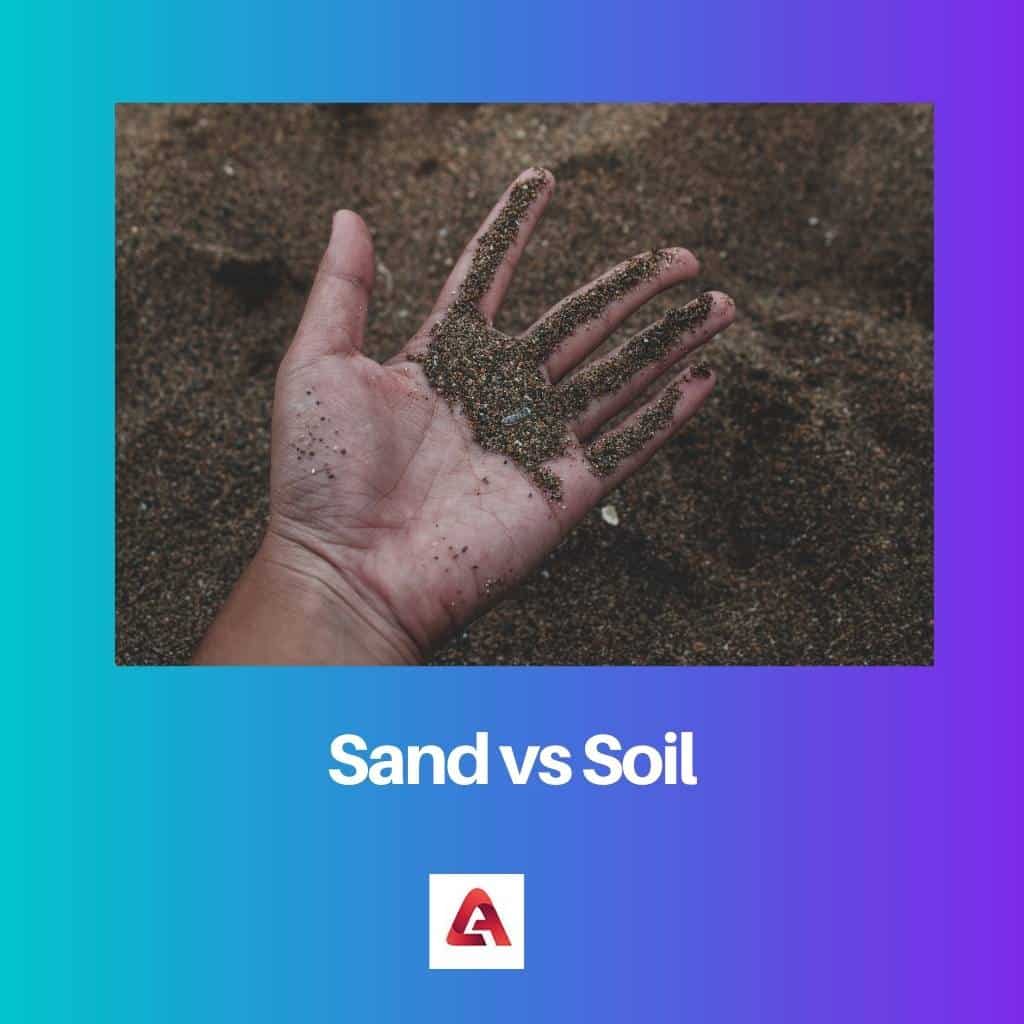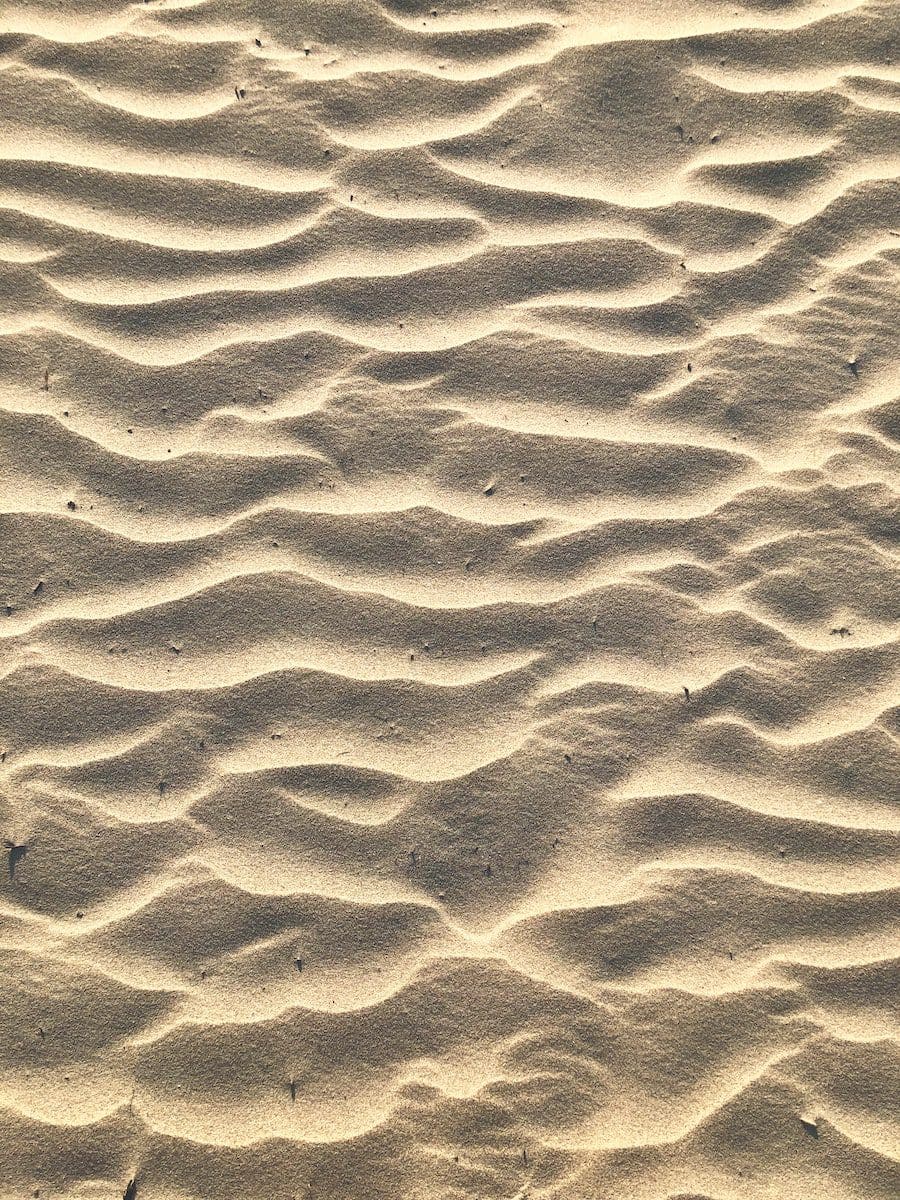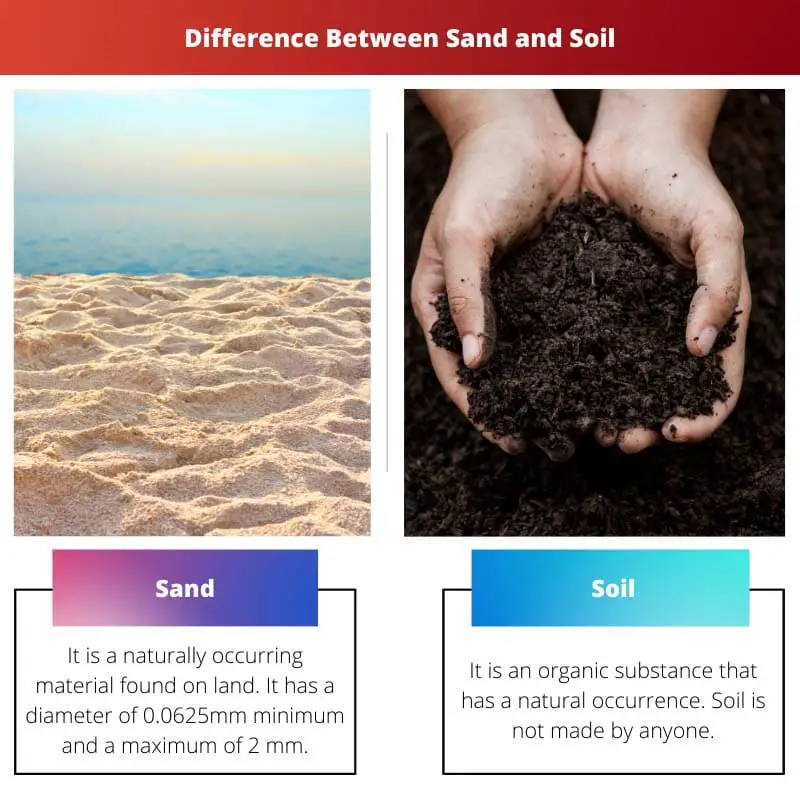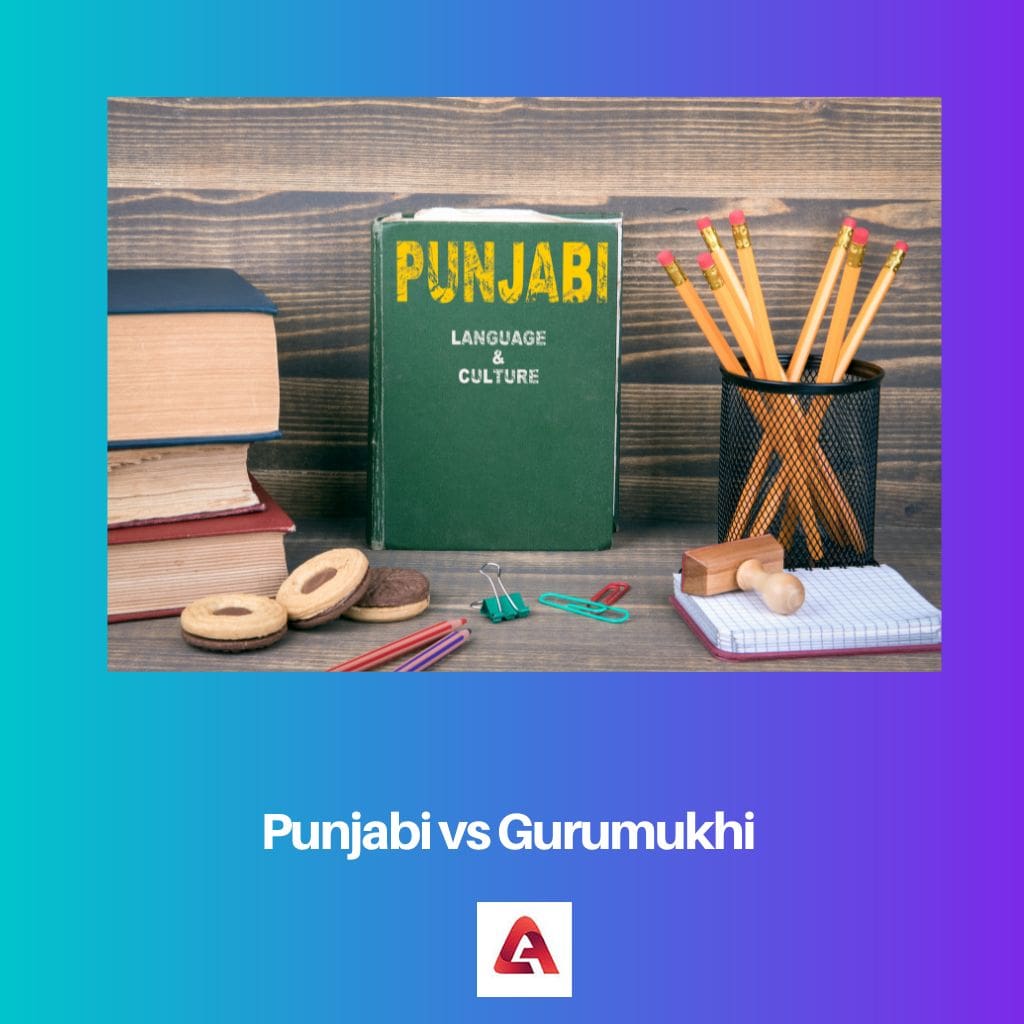There are many particles present in our environment that look similar. Even some of them have similar names. It is important to have a basic knowledge about them and how they are different.
Key Takeaways
- Sand is made of small, loose mineral particles, primarily composed of silica, while the soil is a mixture of organic matter, minerals, gases, liquids, and organisms.
- Soil supports plant life by providing nutrients, water, and a place for roots to anchor, whereas sand has limited fertility and water retention capabilities.
- Sand is used in construction, filtration systems, and landscaping, while the soil is essential for agriculture, gardening, and supporting ecosystems.
Sand vs Soil
The difference between Sand and Soil is in terms of their nature of being organic and porous. They also differ in terms of the ability to hold water. Both sand and soil are made up of different components. They both have different weights and different types as well. Sand is relatively smaller in size than soil and is part of a type of soil.

Sand is the small granules formed when mountains and other harder substance is crushed into smaller particles. They can resist melting at high temperatures. It is organic but not more than soil.
Soil is a mixture of different substances, especially organic matter. It is the topmost layer of the earth that can be seen and touched.
Comparison Table
| Parameters of Comparison | Sand | Soil |
|---|---|---|
| Nature | Less organic | More organic |
| Capacity to hold water | It does not hold water | Holds water |
| Weight | Lighter | Heavier |
| Common component | Silicon dioxide | Organic matter |
| Made up of | Air, water, and organic matter | Calcium, silica, other minerals. |
What is Sand?
It is a naturally occurring material found on land. It has a diameter of 0.0625mm minimum and a maximum of 2 mm. Some rare types of sand include white sand.
As discussed above, it is becoming extinct and is available in small quantity, therefore, many country imports sand. It can only melt under high and scorching temperatures, and for the same reason, sand on a beach does not melt.
Uses of Sand
- To filter water.
- To have a grip.
- For making sandpaper.
- For cleaning oil and greasy liquids.
- For road base.
There are several usages of sand except the above.
Types of Sands:
- Pit sand: it is found in red or orange color and has rough, sharp, and sharp grains.
- River sand: it has fine grains formed by the water current and is in whitish-grey.
- Sea Sand: sand eroded by seawater and is brown. Grains are circular.
- Manufactured sand: it is when hard granite stones are crushed into small granules.

What is Soil?
It is an organic substance that has a natural occurrence. Soil is not made by anyone. There are several uses of the soil that includes:
- Agriculture usage: Or crops and plants need certain nutrition content for proper growth and development.
- Building: It is also one of the main reasons for the exploitation of the soil, as industries use tons of soil for the construction process.
- Poetry: after adding a proportionate amount of water to a certain type of soil, several utensils and other things can be made.
- Medicine: Mostly for antibiotics as it has microbes that are dangerous for harmful bacteria that can enter our body.
- Beauty Products: From foundation to blush, soil is used in most makeup-related products.

Main Differences Between Sand and Soil
- They are also different in terms of weight; Sand is much lighter when compared to heavier soil.
- Soil can also be red, and white sand can also be green in color, while the rest of the colors are the same.





